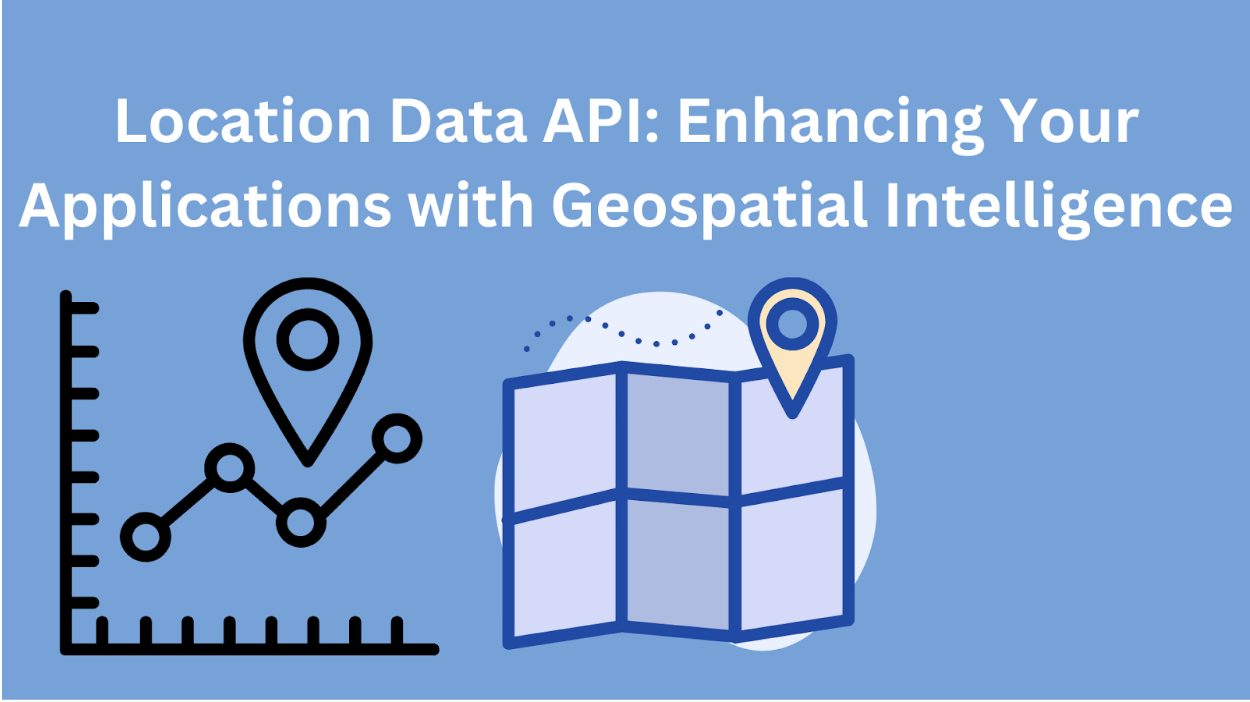In today's interconnected world, location data enhances user experiences and provides valuable insights. Whether you're building a mobile app, a web application, or a smart device, integrating location data can significantly enrich your product's functionality. This is where Location Data APIs come into play, offering developers powerful tools to leverage geospatial intelligence in their applications.

What is a Location Data API?
A Location Data API is a software interface that allows developers to access and integrate geospatial data into their applications. This data includes information about geographic locations, such as latitude, longitude, addresses, points of interest, and more. By utilizing a Location Data API, developers can add location-based features to their apps, such as mapping, geocoding, reverse geocoding, routing, and location-based notifications.
How Does a Location Data API Work?
A Location Data API typically sends a request to a server that hosts the geospatial data. The server processes the request and returns the relevant data, such as a map image, a list of nearby places, or directions from one location to another. The API provides developers with the tools to parse and display this data in their applications, making it easy to integrate location-based features.
Benefits of Using a Location Data API
Enhanced User Experience: By integrating location data, developers can create personalized and location-aware user experiences. This can include features such as location-based recommendations, local search, and geotargeted ads.
Improved Decision Making: Location data can provide valuable insights into user behavior, preferences, and trends. By analyzing this data, developers can make informed decisions about their products and services.
Increased Efficiency: Location-based features like routing and geofencing can help users navigate more efficiently and businesses optimize their operations.
Scalability:Location Data APIs are designed to handle large volumes of data and requests, making them suitable for applications of all sizes.

Examples of Applications of Location Data APIs
Mapping and Navigation: Apps like Google Maps and Waze use Location Data APIs to provide users real-time traffic information, directions, and alternative routes.
Geotargeting: E-commerce platforms use Location Data APIs to deliver personalized offers and promotions based on the user's location.
Asset Tracking: Logistics companies use Location Data APIs to track the location of their vehicles and shipments in real time.
Weather Forecasting: Weather apps use Location Data APIs to provide users with localized weather forecasts and alerts.
Conclusion
Location Data APIs are powerful tools that can enhance your applications' functionality and user experience. By leveraging geospatial intelligence, developers can create innovative and location-aware apps that provide value to users. Integrating a Location Data API can help you unlock new possibilities and create compelling user experiences, whether you're building a mobile app, web application, or smart device.
FAQs
1. What is geocoding?
Geocoding is the process of converting addresses into geographic coordinates (latitude and longitude) that can be used to pinpoint a location on a map.
2. What is reverse geocoding?
Reverse geocoding converts geographic coordinates (latitude and longitude) into a human-readable address.
3. How accurate is location data from Location Data APIs?
The accuracy of location data can vary depending on the source and the data collection method. In general, Location Data APIs provide accurate location data within a few meters to several hundred meters.
4. Are Location Data APIs free to use?
Some Location Data APIs offer free usage tiers with limited features and usage limits. However, developers may need to pay a subscription fee for more advanced features and higher usage limits.
5. What are some best practices for using Location Data APIs?
Some best practices for using Location Data APIs include using caching to reduce the number of requests, optimizing queries for performance, and adhering to the API's usage limits and terms of service./p>